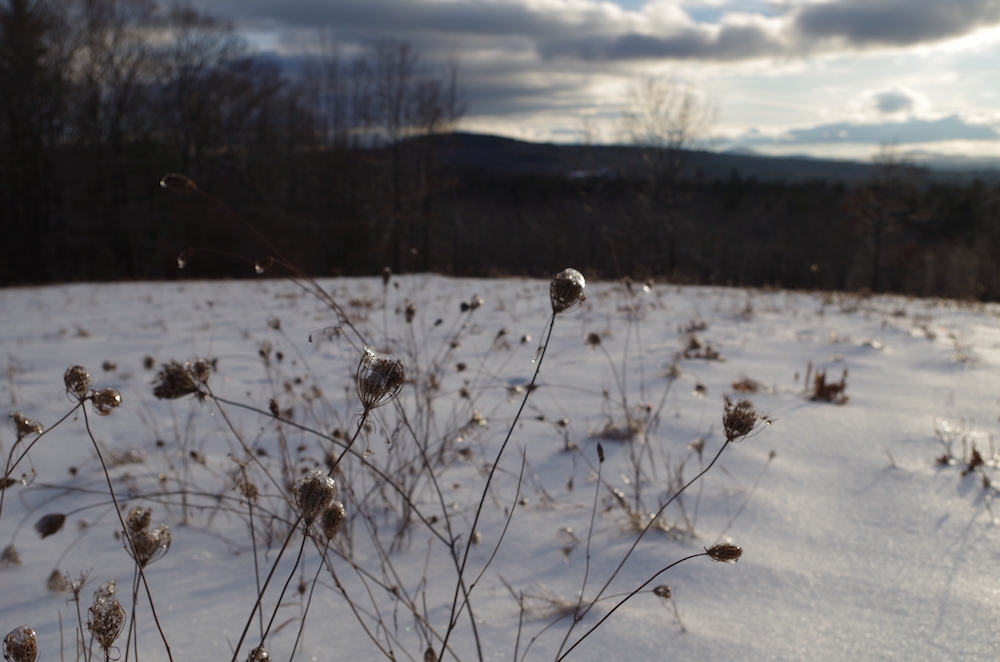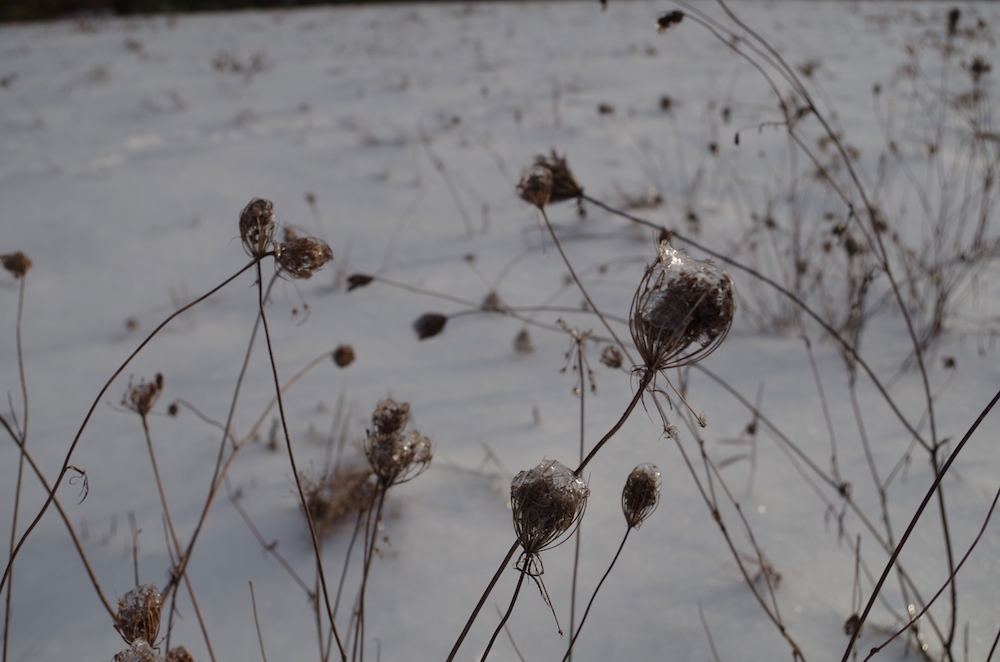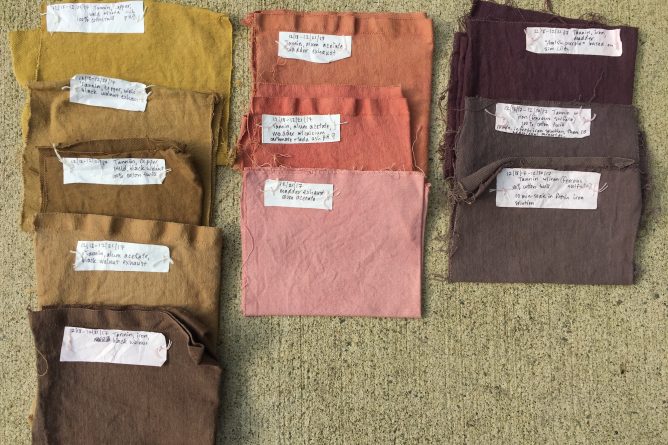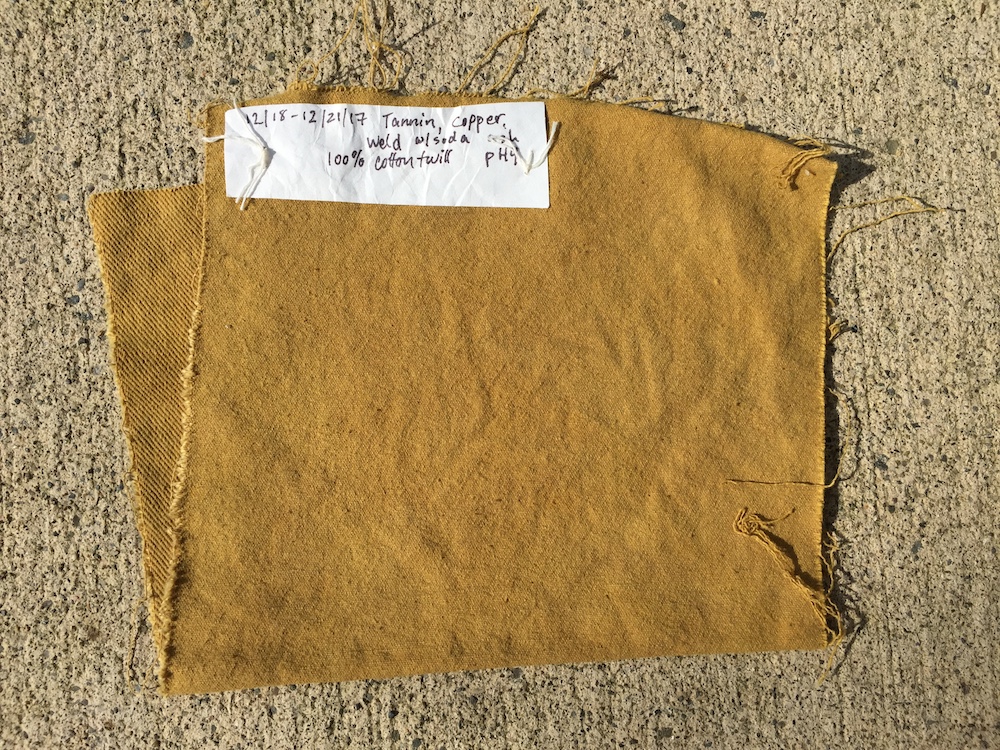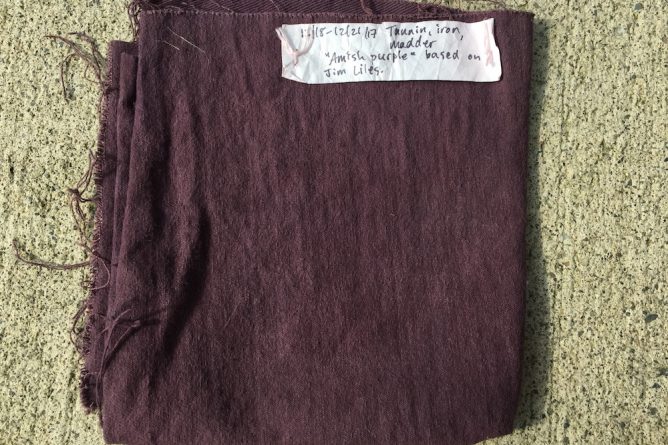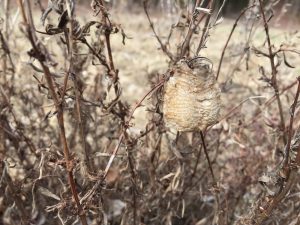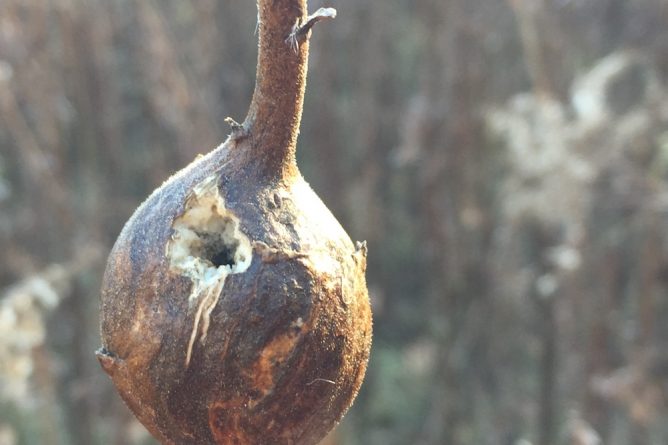Way back in December, around the time of the winter solstice, I ran some dyeing experiments with heavy cotton twill cloth. I have had some frustrations with cotton over the years, some of which I’ve documented here on this blog. On cotton yarns and cloth, I often get colors that are much lighter than I want, or a different shade than I was expecting.
Nevertheless, there are some colors and techniques that have always intrigued me. So in December I tried a recipe for “Amish Madder Purple” from Jim Liles’ book The Art and Craft of Natural Dyeing.
Cotton, like other plant-derived fibers, is primarily composed of cellulose. Cellulose is harder to dye with natural dyes than protein fibers. Protein fibers come from animals, for example: wool from sheep, mohair from Angora goats, alpaca from alpacas, llama from llamas, and angora from rabbits. Plant fibers can come from a wide range of sources, such as cotton, linen (from flax), hemp, and ramie (from a type of nettle). Continue reading “Tannin, Iron and Madder on Cotton” →


